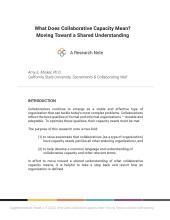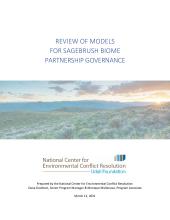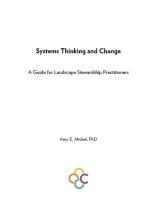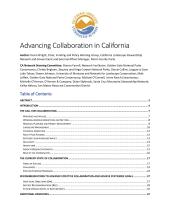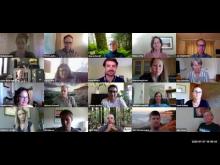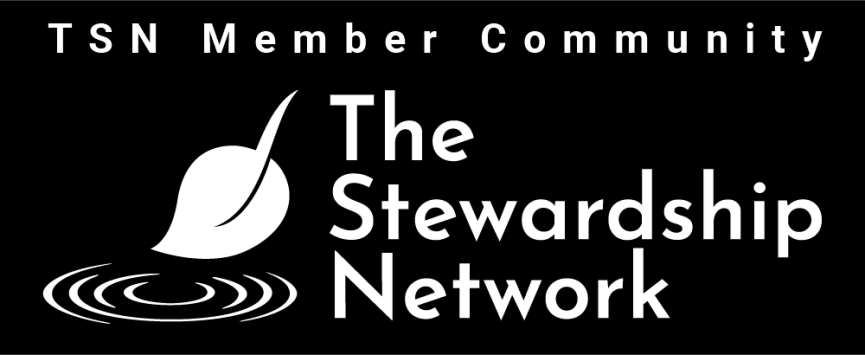Collaborative stewardship is both an art and a science. Get the tools you need to work better together here.
Collaborating Well, August 2022
Defines collaborative capacity and offers a shared framework to guide partnerships tackling complex challenges.
- Details
-
Collaboratives continue to emerge as a viable and effective type of organization that can tackle today’s most complex problems. Collaboratives reflect the best qualities of formal and informal organizations — durable and adaptable. To optimize these qualities, their capacity needs must be met.
The purpose of this research note is two-fold:(1) to raise awareness that collaboratives (as a type of organization) have capacity needs just like all other enduring organizations, and
(2) to help develop a common language and understanding of collaborative capacity and other relevant terms.
North American Intergovernmental Committee On Cooperation For Wilderness and Protected Areas Conservation, 2022
Integrating Indigenous knowledge into land management strengthens conservation, ecosystem survival, and human-nature connections.
- Details
-
In recent years, the limitations of land-management decisions based predominantly on Western knowledge have become apparent. By adopting a more holistic perspective, we can improve our understanding of the interconnected forces that shape ecology throughout North America and expand our tools and approaches for land and resource conservation. Incorporating and implementing the demonstrated knowledge of Indigenous peoples can prove crucial for the survival of some of our most critically threatened ecosystems and species, the sustainable use of our cherished protected areas and the surrounding landscapes and seascapes, and for the revitalization of human health and connections to nature.
National Center for Environmental Conflict Resolution, March 2021
Analyzes governance models to support collaborative conservation across the sagebrush biome.
- Details
-
The Udall Foundation's Center for Environmental Conflict Resolution reviewed three key collaborative partnership models (the North American Wetlands Management Plan and associated Joint Ventures, the Northwest Boreal Partnership, and the Chesapeake Bay Program) and four secondary models (Blackfoot Challenge, Crown of the Continent, the National Invasive Species Council, and the Southeast Conservation Adaptation Strategy) to identify lessons learned and best practices that could be applied to the development of a collaborative partnership in the sagebrush biome.
March 2021
Identifies behaviors that foster or hinder collaboration in multi-stakeholder partnerships through qualitative research.
- Details
-
As we continue to face complex and difficult-to-solve problems such as climate change, social injustice, and a global pandemic, the need for collaboration is more pressing than ever. Multi-stakeholder partnerships (MSPs) are touted as promising mechanisms to tackle these challenges; however, despite their promise, not all partnerships are successful in their collaborative efforts. The presence or absence of individuals with the right mindset to participate in a collaborative leadership process is one common explanation for this.
The purpose of the research presented here is to better understand collaboration in the context of MSPs. Answering the question “Which behaviors foster collaboration and which ones discourage collaboration?” can help us address the question of “How do you effectively participate in the process of collaborative leadership?” In this research, qualitative data were collected and analyzed to reveal behaviors that influence successful collaboration.
California Landscape Stewardship Network, March 2021
Introduces systems thinking tools to help practitioners navigate complexity and drive adaptive landscape change.
- Details
-
In an effort to create a shared language and understanding for landscape stewardship practitioners, terms related to systems, such as systems thinking and systems change, are defined in this guide. Systems in three classifications—biosphere, social, and technosphere—are highlighted. These three systems all share the characteristics of interconnectedness, interdependency, and dynamism
Systems thinking is a lens through which we can understand, diagnose, and solve complex issues, in addition to a lens for decision-making and future planning. Both a process and an outcome, systems change is the action-oriented side of systems thinking, intended to produce long-lasting change.
This guide concludes with a checklist that can be used when approaching problems through a systems-thinking and systems-change perspective. When applying this perspective, the practice of collaborative leadership is highlighted as the most effective approach to tackling today’s complex problems.
California Landscape Stewardship Network, January 2020
Outlines strategies to strengthen partnerships and policy alignment for landscape-scale stewardship.
- Details
-
This paper is a celebration of the many efforts the state has already undertaken to advance collaborative landscape stewardship. Innovative and forward-looking state efforts have inspired the California Landscape Stewardship Network (CA Network) to look ahead in partnership with the state, and explore ways we can work together to advance collaborative landscape scale approaches even further.
Colorado State University, July 2020
This landscape study explores strategies to build leadership capacity for effective conservation across diverse partnerships.
- Details
-
Responding to a desire to work together to improve capacity for leadership in the field of conservation, three collaborating organizations, National Geographic Society (NGS), Global Wildlife Conservation (GWC), and the Smithsonian Institution (SI; collectively referred to as the “Collaborators” in this report), commissioned a landscape study of capacity development initiatives focused on conservation leadership and available to early and mid-career professionals. The goals of the study were to understand what is currently available, identify needs and gaps, and inform the development of potential future initiatives.
California Landscape Stewardship Network, July 2020
- Details
-
This event was the first in a developing series of workshops and trainings focused on building and advancing practitioners’ collaborative leadership skills. It focused on raising awareness around the features of collaborative leadership, including frameworks for working across jurisdictions and sectors, the role of networks, and the importance of interpersonal and technical skills in achieving effective collaboration.
Timeline of the recording:
- Welcome and Intros
- Opening Exercise (7:50)
- Overview and discussion of systems (11:05)
- Overview and discussion of complexity (1:01:30)
- Small group discussion and feedback (1:36:00)
- Overview and discussion of networks (1:48:55)
- Break (2:15:00)
- Overview and discussion of essential skills (2:25:40)
- Wrap-up and conclusion (3:30:30)
California Landscape Stewardship Network, July 2020
- Details
-
California Landscape Stewardship Network participants gathered online to share updates and highlights from their regional work on July 27, 2020.
Tahoe-Central Sierra Initiative, January 2020
TCSI partners restore forest and watershed resilience across 2.4M acres through innovative planning, investment, and collaboration.
- Details
-
The Tahoe-Central Sierra Initiative (TCSI) is a partnership among the
USDA Forest Service, California Tahoe Conservancy, Sierra Nevada
Conservancy, The Nature Conservancy, National Forest Foundation,
California Forestry Association, and University of California Sagehen
Creek Field Station, and eight forest collaboratives. TCSI partners are
accelerating the restoration of forest and watershed resilience
through innovative planning, investment, and management across
the 2.4-million-acre landscape.This document was adapted from a product developed in 2020 for
the Sierra Nevada Conservancy for the TCSI and funded by the
California Climate Investments


